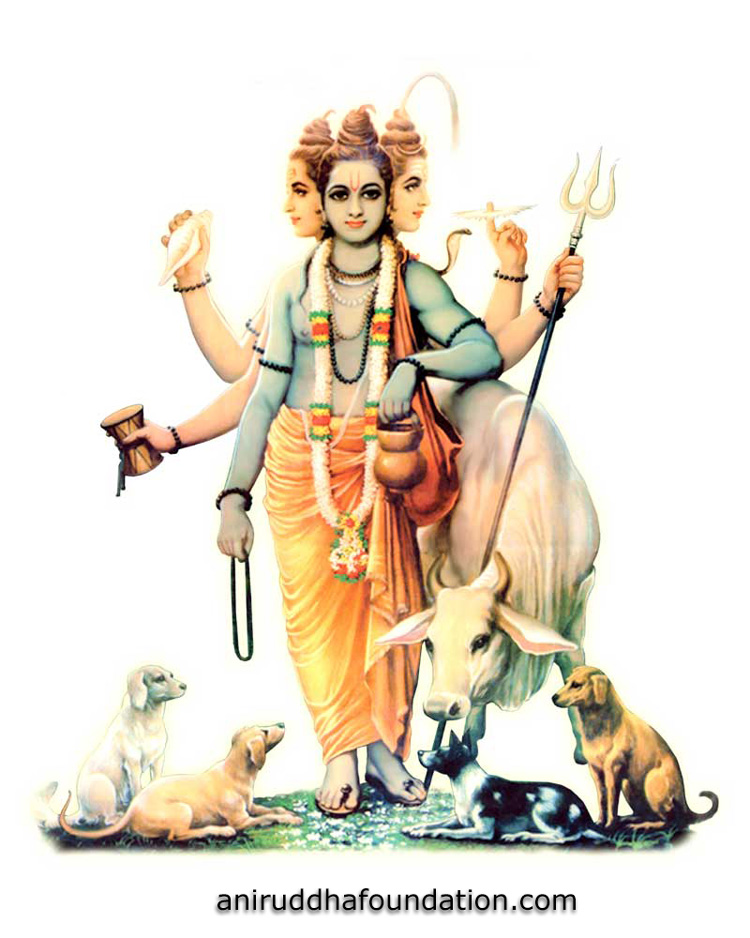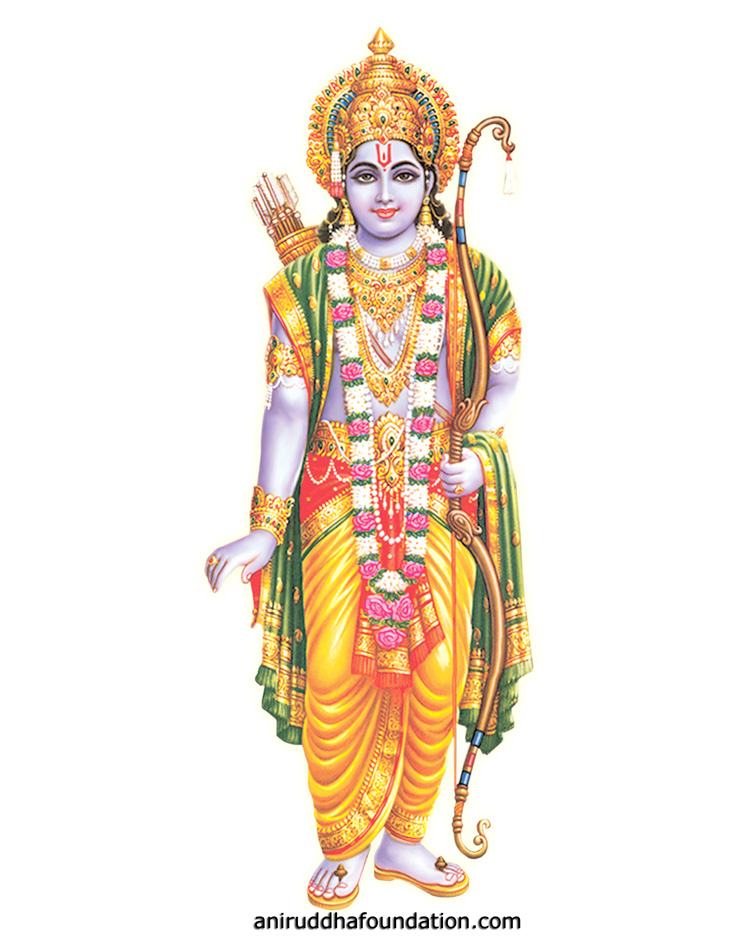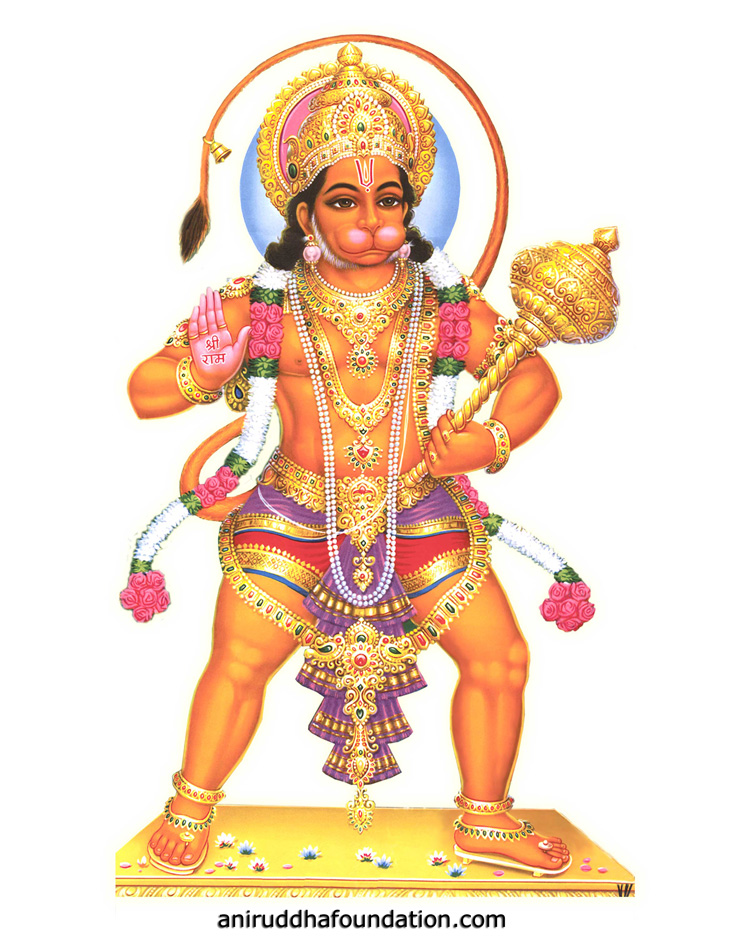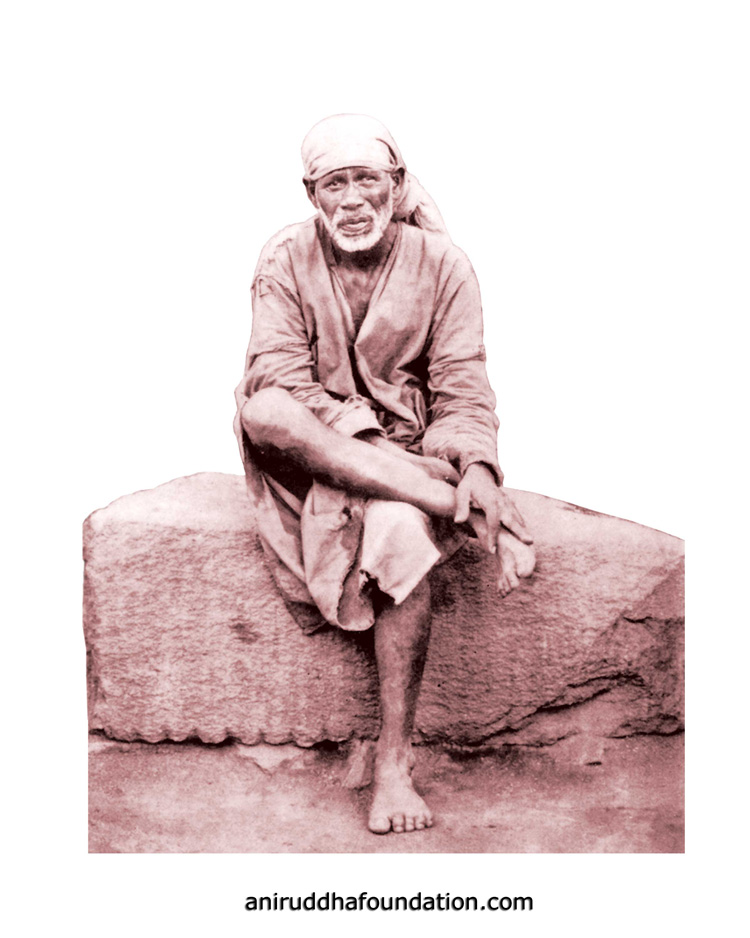Ever-immersed in the Devotion Sentience (Bhaktibhav Chaitanya) of the Parmeshwar Dattaguru and the Aadimata Jagadamba, Sadguru Shree Aniruddha Bapu (Dr. Aniruddha Dhairyadhar Joshi) began delivering discourses from the year 1996 on profoundly venerated stotras like the Vishnu Sahasranama, the Lalita Sahasranama, the Radha Sahasranama, the Ramraksha Stotra and the Shree Sai Satcharita to name a few.
For innumerable Shraddhavans across the globe, Bapu is the ‘Sadguru’. Bapu himself, an ideal family person, exemplifies before us through his conduct as to how one could continue with worldly life and journey on the path to God, at the same time.
Right since his school days till today, Bapu is working tirelessly for the progress of his Shraddhavan friends as also for those oppressed and neglected, and for making their lives free from sorrow, misery and darkness; it is the mission of his life.
All those who come in his contact, realize the connect Bapu has with numerous fields, his proficiency and mastery over those domains and his vast knowledge which flummoxes even the experts from the respective spheres.

These are in essence, memories – memories related to Bapu and stretching from his school days to his days of medical practice. These are memories of Bapu’s teachers, his batchmates, his friends, his neighbours, his patients and their families, i.e., of those who have had close interaction with Bapu, of those who have known him and have had a glimpse into or have been witness to his remarkable, in fact amazing and extraordinary personality. “This book, “The Bapu I have known” is a compilation of their memories of Bapu”. Read More
Many have experienced him, Dr. Aniruddha Dhairyadhar Joshi (M.D. Medicine – Consulting Rheumatologist), from a close quarter during the days of his medical practice. Then, Dr. Aniruddha would treat patients from labour class areas like Paralgaon, Lalbaug, Shivdi and also those from farming classes and the rural areas like Ratnagiri, Sangameshwar, Chiplun, etc. He would treat them at negligible cost or at times even for free. They all could witness glimpses of his extraordinary and uncommon personality in his highly accurate diagnosis, his forthright opinions, his strictness at times unwavering firmness, his honesty with the profession and, in fact, his going beyond the call of duty to establish ties of caring affection with patients and colleagues irrespective of their backgrounds.
Bapu, who unconditionally loves absolutely everyone, has neither neglected nor shown disregard for anyone. He has always taken care of all, has reduced the inferiority complex in people and given them comfort and backing. From all this, what every Shraddhavan experiences is the affinity, the affection and the unfathomable, boundless and unconditional love of Bapu.



In the editorial published in the ‘Dainik Pratyaksha’ on 5th November 2006, titled ‘I am Aniruddha’, Dr. Aniruddha D. Joshi writes –

"Irrespective of the people and the circumstances around me, I remain the same, constant because at all times I live in the present and never lose sight of reality
For me, the awareness and retention of the past are meant only to enhance alertness in the present moment
whereas the gauging of the future is meant to become cautious and wakeful, but again in the present moment, that is my nature"


And it is with this very nature of his, Dr. Aniruddha authored an editorial series titled the ‘Third World War’ in 2006, which appeared in the ‘Dainik Pratyaksha’, and was later published in the form of a book, in English, Hindi and Marathi languages. The editorials were written by Dr. Aniruddha after a detailed study of the global geopolitical happenings and scenario, and was meant to make the Indian society vigilant, able and competent, and prepared.
One aspect of Sadguru Aniruddha, ever-present and eternal, is his unconditional love. It is out of this unconditional love that Bapu performed the ‘Swastikshem Tapascharya’ (penance, austerity).
For a strong foundation of spirituality, one must keep doing upasana on a regular basis. However today, due to stress and barrage of worries, it is not always that one is regular at upasana. Fully aware of this gap in the lives of his Shraddhavan friends, to bridge it, Sadguru Aniruddha commenced the ‘Swastikshem Tapascharya’ on 28th September 2011, the first day of the Ashwin Navratri.
For day and night, constantly and at all times, Sadguru Bapu was in penance, austerity. During the period of the penance, Bapu had, in fact, forgotten his own self and was completely immersed in connection with the Mother Chandika.
There were three facets to Bapu’s Tapascharya – 1) The upasana of the BrahmaTripuraSundari form of the Aadimata Chandika2) The Bala-Atibala upasana and 3) The upasana of the SavitriVidya and the ShreeVidya. A special arrangement for the Yajna kund– ‘Visham-Ashtastram’, was created at the ‘Shree Aniruddha Gurukshetram’ for Bapu’s Tapascharya where Bapu made the specific offerings in the sacred fire.
Sadguru Aniruddha after his discourses at Shree Harigurugram, bows in respect even to the Shraddhavan bhaktas
as he has always fixated himself in the role of being their
‘Server’ or ‘Das’.
In his work, the ‘Shreemad Purushartha (Volume One) Satyapravesh’, Bapu says -
“I am ‘The Ḍās1’ of all those who have a deep love for divine principles and have unshakable faith in them”, and….
1. Ḍās - The one who is dedicated to someone with mind and body.
“I am a Warrior and to teach the art of warfare to all those, who wish to fight their destiny, is my passion”, and….
“I am your Friend”….

Bapu's ‘Panch (Five) Gurus'
Sadguru Shree Aniruddha gives a brief description of his Five Gurus in the sacred work, the Shreemad Purushartha Grantharaj (Volume Two, Prempravas) authored by him.

Dattaguru (Parmeshwar) - the Master Enabler
The chetantattva that is svayamsiddha (equipped with matchless capacities and powers and so self-sufficient) and svayamprakashi (self-illumined), is itself the Parameshvar. The Shraddhavans call it ‘Dattaguru’.
Dattaguru, the first among the five Gurus is the Master Enabler, the Lord and Master of the Sadguru Shree Aniruddha’s Anandmay kosha (The innermost of the five concentric envelopes of the deha and is closest to the state of joy).

Gayatri (Aadimata) – the Vatsalya Guru
‘Gayatri’, the very first, the foremost manifestation of the supremely pure, sacred and auspicious Aadimata is active at all times only at the supra-occular level.
‘Gayatrimata’, Sadguru Shree Aniruddha’s vatsalya guru, governs his vijnanamaya kosa (one of the five concentric envelopes of the deha) and is the second Guru.

Ram – The Doer Guru
Prabhu Shreeram is Sadguru Shree Aniruddha’s Guru, who is the Doer (the Subject). He is the Lord and Master of Shree Aniruddha’s manomaya kosa. The character, the personality, the values of Shreeram is the actual example of the implementation of the principles of maryada (restraint).
Shree ram is referred to as the maryadapurshottam (the best among men and the one Who adheres to the value of restrain at all costs).

Hanumant (the Rakshak or the Protector Guru)
Shree Hanumanta, the fourth Guru of Sadguru Shree Aniruddha is his ‘Rakshak Guru’, in fact, the matchless ‘maryada rakshaka‘ (He values maryada, abides by it and protects it).
Shree Hanumanta, the Lord and Master of Sadguru Shree Aniruddha’s pranamaya kosa and his Protector Guru, who finds fulfillment and joy in calling Himself the server of Prabhuramachandra, and Bapu, ascertains with pride that his mission and life task find fulfillment in humbling himself before and serving this Server.

Sai Samartha (Digdarshak Guru)
Shree Sai, the fifth Guru of Sadguru Shree Aniruddha is his Digdarshak Guru (the Guru who is the Guide), the Lord and Master of his annamaya kosa (the outermost of the five concentric envelopes of the deha).
Bapu says in “Prempravas” Volume Two of the Shreemad Purushartha Grantharaj, “If Saisamartha, the Master of my annamaya kosh, my guru, who guides and directs, pronounces the above words, I assert that I have no right to talk about my immensity or prominence”.





